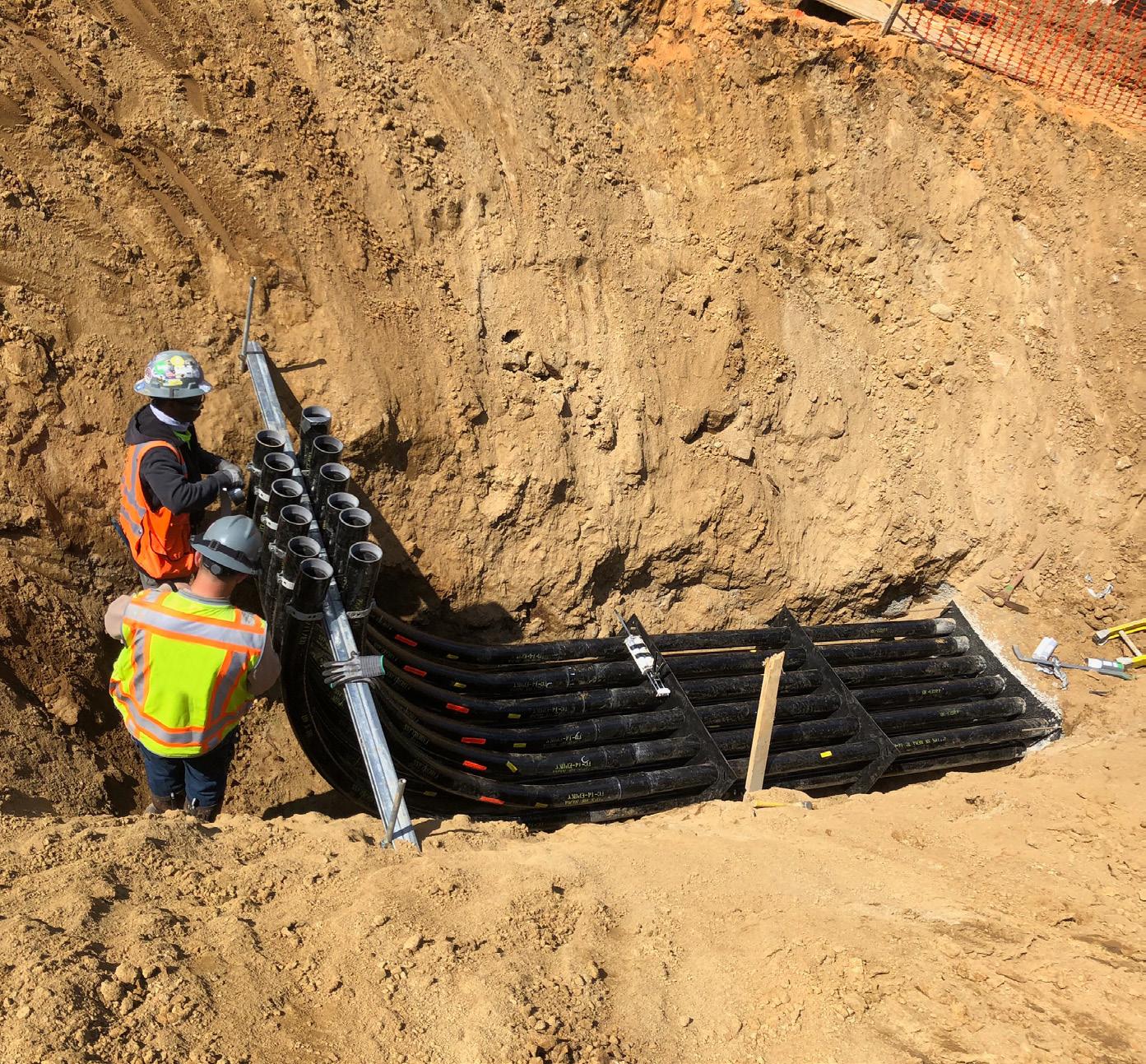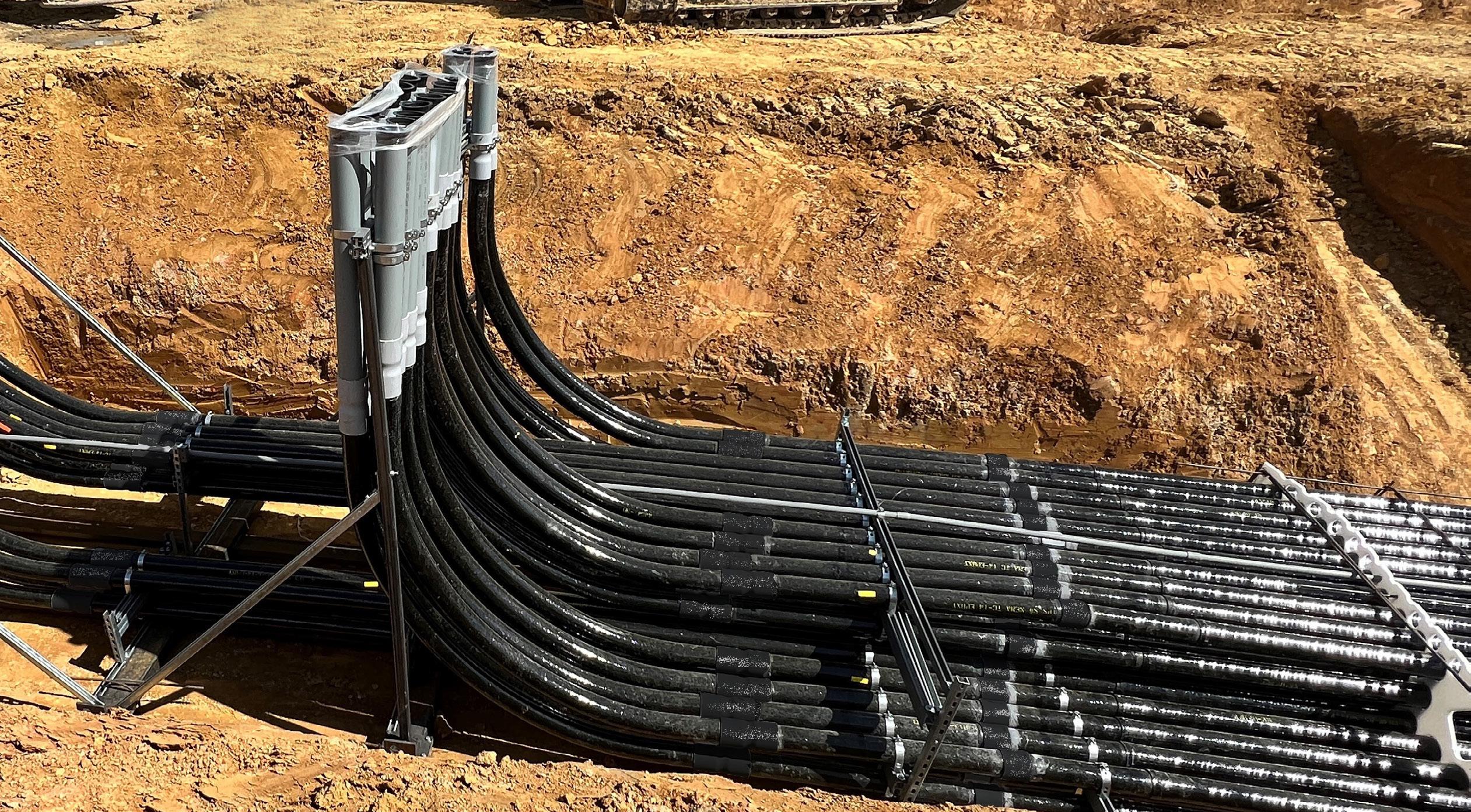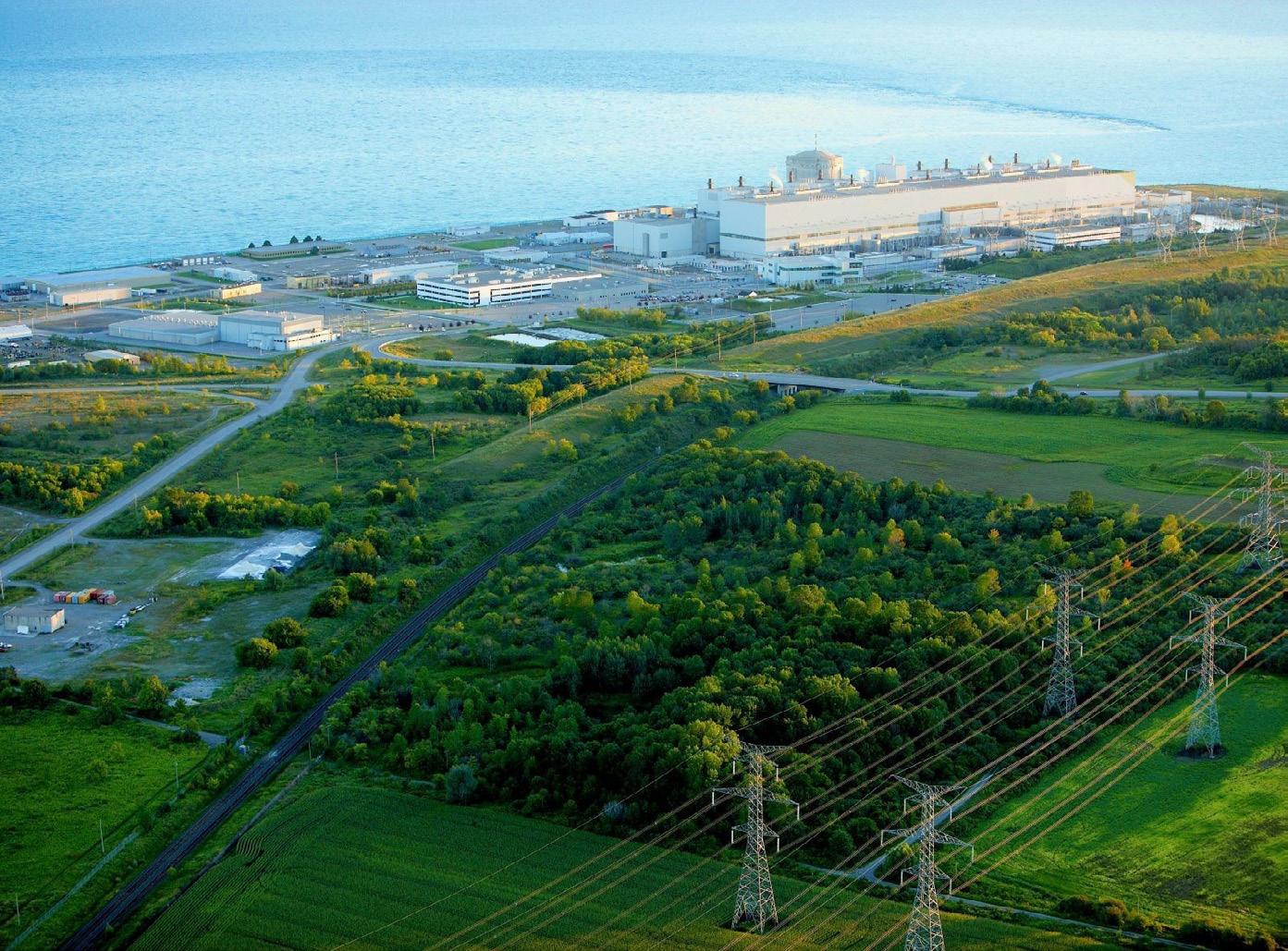Materials


The
Investments


Materials


The
Investments

September 2023
Market Trends Handbook ccemag.com
6
4
4
EDITOR
Peter Saunders (416) 510-5119 psaunders@ccemag.com
SENIOR PUBLISHER
Maureen Levy (416) 510-5111 mlevy@ccemag.com
ACCOUNT CO-ORDINATOR Cheryl Fisher (416) 510-5194 cfisher@annexbusinessmedia.com
GROUP PUBLISHER
Paul Grossinger (416) 510-5240 pgrossinger@annexbusinessmedia.com
COO Scott Jamieson sjamieson@annexbusinessmedia.com
ISSN: 0712-4996 (print), ISSN: 1923-3337 (digital)
SPONSORED FEATURE Fibreglass Conduit Sweeps and Elbows Address Data Centre Challenges
Champion Fiberglass® manufactures innovative electrical conduit products that provide effective solutions to common project challenges.

6
According CSA Group, “more than 50 vendors in Canada and abroad are developing small modular reactors (SMRs), leveraging proven nuclear power plant technologies, such as light water reactors, or introducing novel approaches.”


COVER IMAGE: CHAMPION FIBERGLASS
8
The 2023 Federal Budget and Engineering
8
The government is prioritizing investments in infrastructure, electrification, clean energy and manufacturing, emissions reduction, critical minerals, EVs and batteries, among other major projects relevant to consulting engineers.
Data centre demand is on the rise, driven by technology advances like artificial intelligence (AI). As this demand surges, the electroindustry faces the need for reliable materials, including electrical cables, conduit and elbows of various sizes.
Champion Fiberglass®, a supplier of electrical conduit to data centres, manufactures innovative conduit products that provide effective solutions to common project challenges.
Data centre projects with a high cable density pose a significant risk of needing repairs, due to burn-through. To combat this, Champion offers flexural strength and the ability to absorb mechanical impact, thanks to a single circuit-winding process in elbow manufacturing. These features effectively prevent cables from burning through the conduit, eliminating the need for costly repairs. Furthermore, fibreglass is the only substrate where cables do not melt or weld to the inside of the conduit, allowing for cable repairs without damaging the conduit itself.
Reinforced thermosetting resin conduit (RTRC) sweeps from Champion boast a co-efficient of friction of 0.38, significantly lower than the 0.55 of galvanized rigid conduit (GRC) and 0.9 of polyvinyl chloride (PVC) Sch 40 and Sch 80. This characteristic enables the use of longer conduit runs with fewer pull boxes, resulting in faster and smoother installations. These sweeps also offer the added advantage of no conductivity, reducing the risk of electrical injuries during installation.

Additionally, the lightweight nature of fibreglass conduit contributes to greater ease and speed in installation. Largerdiameter fibreglass conduit sweeps yield substantial labour savings due to quicker installations.
According to National Electrical Contractors Association, fibreglass conduit installation requires only a fraction of the labour time compared to GRC or PVC-coated steel. Potential project savings can be estimated using Champion’s elbow calculator
Champion elbows are consistently chosen by specifying engineers and electrical contractors for their longevity and low maintenance requirements. These elbows form an integral part of a complete electrical conduit system, offering exceptional strength, durability and corrosion resistance.
Champion has a long history of success in data centre projects. In a recent project, for instance, fibreglass conduit offered the following wins:
• It served as a reliable substitute for PVC throughout a product shortage.
• It saved material costs over other conduit types.
• Its low co-efficient of friction, no burn-through and fault resistance provided the ultimate protection for important electrical infrastructure.
• On-time deliveries and speedy installation (with guidance from the Champion team) allowed the project to finish on time to hit goals.
For another data centre project, fibreglass conduit proved a better alternative to GRC, as the material costs were lower and the lighter weight saved substantial time in installation. The results included the following wins:
• Fault resistance and elimination of cable burn-through to support the facility for its entire life cycle.
• Immediate savings in easier field handling, lower freight cost and lower total installation cost.
• Savings of more than $500,000 in materials and installation.
As the data centre industry continues to expand, Champion remains at the forefront, providing cutting-edge solutions to address the challenges faced by electrical professionals. Its innovative product lines enhance projects with safety, reduced costs and increased efficiency.
Fiberglass conduit is a lightweight, durable alternative to GRC in data centers.


> No burn-through eliminates elbow repairs
> Lower coefficient of friction for smooth pulls
> Fault resistance makes repairing cables easy

> Durable and corrosion-resistant for project longevity

> Available with lower material and installation cost
> NOW shipping within 48 hours
BIM models available at championfiberglass.com/BIM

Canada’s decarbonization goals suggest a bright future for small modular reactors.
With federal net-zero targets calling for deeper decarbonization of the power grid, momentum is building across Canada to increase capacity for emissions-free nuclear energy production. In addition to refurbishing existing facilities, which account for up to 15% of Canada’s (and about 60% of Ontario’s) generated electricity, another area of focus is the development of small modular reactors (SMRs), which could replace fossil fuel-powered generators for heavy industry, the oil and gas sector and remote areas not connected to the main grid.
According to the Canadian Standards Association (CSA) Group, “more than 50 vendors in Canada and abroad are developing SMRS, leveraging proven nuclear power plant technologies, such as light water reactors, or introducing novel approaches.”
The appeal of these new reactors includes their simplified approach to safety, small size, portability and scalability. Compared to the 6,400-MW capacity of the Bruce Nuclear Generating Station’s eight Canada Deuterium Uranium (CANDU) pressurized heavy-water reactors in Tiverton, Ont., for example, a single SMR would produce between 5 and 300 MW.
Another goal is to improve affordability through factory-based plant construction. For this reason, groups of SMRs are referred to as ‘fleets.’
Last year, the Canada Infrastructure Bank (CIB) committed $970 million toward Canada’s first SMR, which Ontario Power
Generation (OPG) is developing and building next to its 3,500-MW Darlington Nuclear Generating Station in Clarington. The financing will cover the project’s first phase, including project design, site preparation, equipment procurement and utility connections.

“ There’s a lot of momentum now,” says Amy Gottschling, vice-president (VP) of science, technology and commercial oversight for Atomic Energy of Canada Ltd. (AECL), which owns Chalk River Laboratories and the intellectual property (IP) for the CANDU reactors. “Following the direction of Natural Resources Canada (NRCan) and the Small Modular Reactor Action Plan, with a pan-Canadian
approach, we are supporting research, technology demonstrations, standards, programs, infrastructure developments and materials sciences through Canadian Nuclear Laboratories (CNL). We are technology-agnostic.”
G ottschling explains SMRs would complement large reactors and supplement the intermittent power generation of wind turbines and solar panels in smaller and remote communities. AECL is working with vendors to help build the needed supply chains, corresponding to various provinces’ degree of demand.
The governments of Alberta, Saskatchewan, Ontario and New Brunswick have a strategic plan for SMR development and
deployment, building upon a 2021 feasibility study from their utilities. There is also interest from Manitoba, particularly in Pinawa, which hosts the AECL-owned and CNL-managed Whiteshell Laboratories nuclear research and development (R&D) site. Connected to Manitoba Hydro’s grid, this site has been the 1,500-person municipality’s main employer, but is now being decommissioned, so there is an opportunity for a comprehensive SMR demonstration, which could lead to further deployments for off-grid communities and mining sites.
With SMRs comes the need for new standards. CSA started its nuclear program in the 1970s and has since developed more than 65 standards to support safe and reliable operations. The Canadian Nuclear Safety Commission (CNSC) references 90% of these, which address the full life cycle of nuclear power plants and related facilities, from design to decommissioning.
In 2015, CSA established a task force to track the development of SMRs and their needs for standardization. Following up on this initial work, CSA published a research report in 2021, exploring the role of standards in facilitating SMR deployment.
“ The report outlines approaches, analyzes case studies and includes a landscape scan of relevant co-operation and harmonization initiatives for SMRs, including those among regulators, industry and standards development organizations,” says Larisa Logan, CSA’s director of power generation and delivery. “It concludes with recommendations and considerations on standards harmonization. Some of the solutions proposed include updates to existing standards, developing new national, regional and international standards and collaboration with other jurisdictions.”
CSA has adapted most of its nuclear standards over the past decade to incorporate technology-neutral requirements and guidance, so as to allow for new designs, including SMRs. Examples include CSA N286-12, Management system requirements for nuclear facilities; CSA N290.7:21, Cyber security for nuclear facilities (developed with input from SMR representatives from its initial publication); CSA N293S1:21, Supplement No. 1 to CSA N293-12, Fire protection for nuclear power plants (developed in
2020 to clarify application to SMRs); and CSA N294-19, Decommissioning of facilities containing nuclear substances.
“SMRs use new technologies and enhanced safety features that may not be addressed within existing standards,” says Logan. “For this reason, the task force has worked to identify and prioritize other standards-related topics that would impact SMRs, including pressure boundary, steel-concrete composite construction, functional containment, emergency management and planning zones, in-service and periodic inspection, reliability and integrity management. For these, we are working with stakeholders to evaluate the applicability of existing standards, develop a more specific list of gaps and recommend the scope and urgency of potential updates to the impacted standards.”
The demand for nuclear-certified consulting engineering firms to take part in these ongoing developments is significant.
“CNL’s strategic vision for 2030, including but not just focusing on SMRs, needs strong partnerships to move fast, spanning government, academia and private industry,” says Gottschling. “We have Canada’s largest research campus. Now is the opportunity for engineering companies to come forward.”
One such firm is SNC-Lavalin, steward of the CANDU design, originally developed more than 60 years ago and currently used across four continents. Across the nuclear sector, the firm has overseen licensing, design, technology development, new builds, reactor life extensions, decommissioning and site remediation.
“I’ve been in nuclear for my entire career of more than 20 years and these are exciting times right now,” says Julianne den Decker, senior VP (SVP) of SNC-Lavalin’s Candu Energy unit. “Climate change and energy security concerns will push an increase in electricity generation. The promise of SMRs bakes in efficiency, modularization and repeatability through the ‘fleet’ approach. Project management will be important in controlling costs.”
By way of example, SNC-Lavalin is working with Moltex Energy Canada in Saint John, N.B., which was selected by its province’s government and NB Power to develop an SMR for initial deployment next to the Point Lepreau Nuclear Generating Station in Maces Bay. Planning and preparatory work for this deployment are well underway.
“Moltex’s design will power itself using spent nuclear fuel,” den Decker explains, “which will help reduce the volume of spent fuel that needs to be stored.”

SNC-Lavalin is also poised to support other SMR vendors, from large original equipment manufacturers (OEMs) like GE Hitachi and Westinghouse to new start-ups, some of which are focused on older reactor design concepts that were never fully realized. As such work ramps up around the world, den Decker emphasizes the geopolitical factors in play.
“Canada was leading the way on SMR development four years ago, seeing real promise and developing a road map,” she says, “but now some parts of the world are leapfrogging us with greater funding. In all countries, federal support is very important.”
The federal government released its 2023 budget in late March, prioritizing investments in infrastructure, electrification, clean energy and manufacturing, emissions reduction, critical minerals, electric vehicles (EVs) and batteries, among other major projects relevant to the consulting engineering community.
The budget introduced tax credits for investments in clean electricity, technology manufacturing and hydrogen, enhances them for investments in carbon capture, utilization and storage (CCUS) and expanded eligibility for them for investments in clean technology. A new $15-billion arm's-length Canada Growth Fund, as previously announced in a 2022 economic statement, will aim to attract private capital to build the clean economy.
The Canada Infrastructure Bank (CIB) is set to invest at least $20 billion to support the construction of major clean electricity and green infrastructure projects. The budget also proposed $3 billion over 13 years to recapitalize funding for renewables and electrification to support

regional priorities and Indigenous-led projects, renew the smart grid program and exploit Canada's offshore wind potential, particularly off the coasts of Nova Scotia and Newfoundland and Labrador.
“ The budget will create a significant amount of new opportunity for many consulting engineering companies over the years ahead,” said ACEC-Canada in its analysis of the government’s priorities. “While there was no mention of a national infrastructure assessment or procurement reform, there was an enormous emphasis placed on attracting investment for major projects. We expect in turn that will create an opportunity for further discussions about how best to ensure infrastructure meets the needs of local communities, while connecting Canada's natural resources to a global supply chain. ACEC had advocated for investments in the electricity grid, which will spur more investments in new community infrastructure projects
beyond generation and transmission.”
ACEC went on to host energy and resource sector stakeholders in Ottawa to discuss further how a national infrastructure corridor could drive many of the budget’s long-term goals.
The budget also called for the government to outline a plan by the end of this year to improve the efficiency of impact assessment and permitting processes for major projects.
“ There is positive news on climate action, in regard to investing in clean electricity and supporting the clean supply chain through expanded tax credits,” said the Canada Green Building Council (CAGBC) in its own reaction to the budget. “These changes will have meaningful impacts for our mission to decarbonize Canada’s built environment by 2050. Yet, one surprise was the lack of mention of a green buildings strategy in the budget. We look forward to changes to codes reflecting the urgency of climate action and remain committed to working with the federal government on decarbonization.”
A new $15-billion fund will aim to attract private capital to build the clean economy.